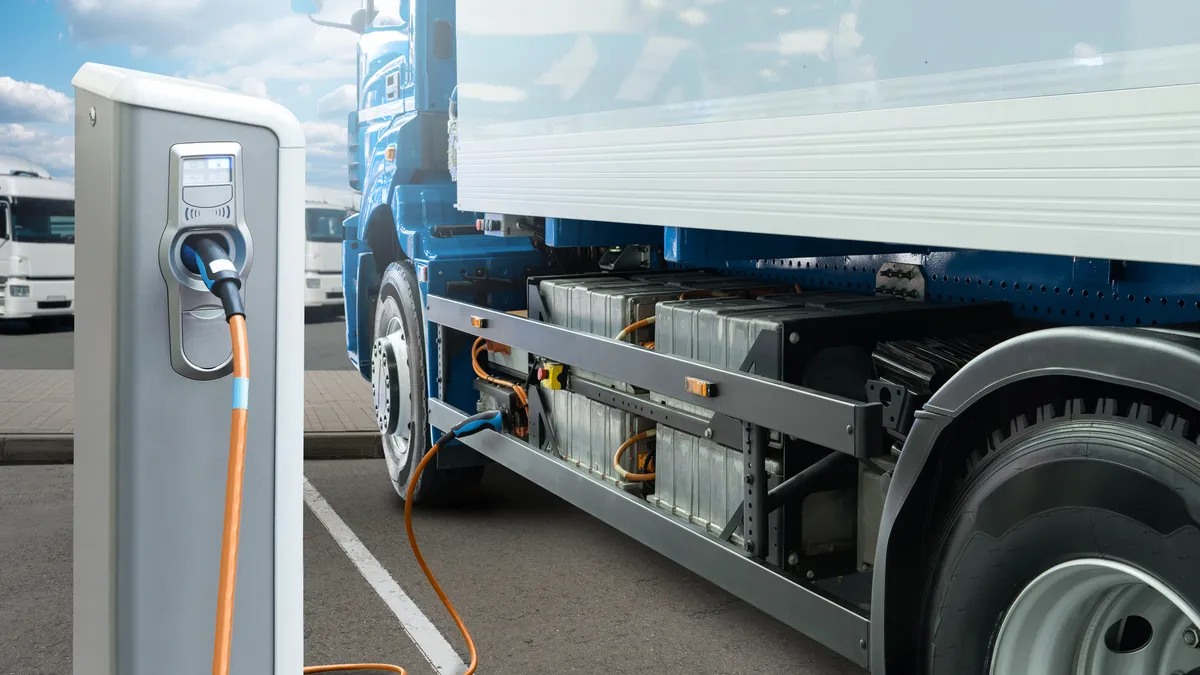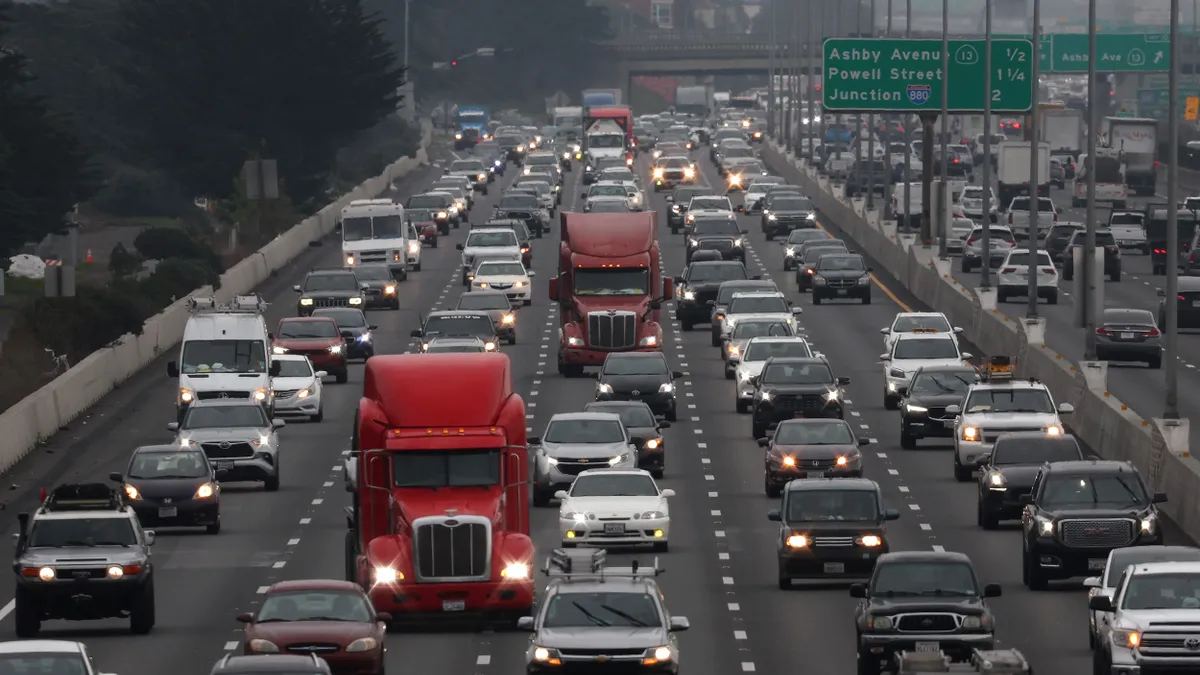When Nevada joined an initiative to help accelerate the adoption of electric trucks in March, stakeholders took note.
The Medium- and Heavy-Duty Zero-Emission Vehicle initiative has been working since 2020 to develop recommendations for policymakers on how to push truck and bus electrifications in their state. Led by the Northeast States for Coordinated Air Use Management Initiative, the group includes 17 states from across the country as well as Quebec and Washington, D.C., which signed a memorandum of understanding to collaborate on an action plan for how to push truck and bus electrification in their states.
As of March, there is a draft plan in place, and the group collected public feedback on the plan through May 9.
"This is an industry in its early stages and requires support to get off the ground."

Lucy McKenzie
Director, Atlas Public Policy
Recommendations vary, including calls for heightened sales and fleet purchase requirements to state financing programs for fleet conversions and the coordinated development of long-haul charging infrastructure.
Environmental advocates applaud the plan for bringing interstate stakeholders together on actionable electrification goals and say it now comes down to implementation.
Lucy McKenzie, a director at Atlas Public Policy, said that while the plan "hits the nail on the head" for necessary actions to accelerate electrification, "it's hard to say for sure how a plan like this will get off the ground effectively."
One of the key tenets of the plan is its recommendation for EV purchase requirements, based on California's Advanced Clean Trucks regulation. The plan calls for aggressive increases in manufacturers' medium- and heavy-duty electric truck sales, up to 75% of total sales by 2035.
"Certainly the purchase requirements have kicked things off in a big way on the light-duty side, so I think it's really a question of how many of these recommendations the states and the industry that they're partnering with put into place," McKenzie said. "And following up on this MOU with codified law will be really important to do that."
For states like Nevada, which has made gains in recent years in electrification with new state investments in charging infrastructure, a coordinated, interstate approach is vital for effective implementation. This is particularly true in long-haul trucking, a sector of the market that has yet to achieve major fleet conversions. Heavy-duty trucks make up the smallest number of deployed electric trucks across the country at just 47, according to a 2021 Calstart survey.
Now that the plan is open for public feedback, advocates in both the private and public sector hope that its recommendations bring consistency to fleet electrification standards across states. Without interstate standards, Michael Tunnell, director of environmental affairs at the American Trucking Associations, says carriers could face an inequitable market in which a fleet's location could submit it to much more stringent — and expensive — electrification requirements. And while the plan recommends a set of policies for participating stakeholders, how they are implemented will ultimately be up to each state.
The high cost of heavy-duty truck electrification is one of the major obstacles plaguing the effort. The memorandum attempts to start addressing the hefty expenses associated with fleet conversion with calls for states to implement funding programs, such as purchase incentives to reduce purchase price differentials between EV technology and OEMs or purchasing assistance programs, similar to California's MHD ZEV Fleet Purchasing Assistance Program that was established last year.
However, such a subsidized approach leaves carrier advocates like Tunnell nervous about the strategy's longevity.
"The cost is outrageous. Everything on the road these days seems to have a huge subsidy tied to it. How long can you sustain that?" Tunnell said. "I don't know the answer to that question."
That question is one analysts say the industry must consider. In a January 2022 report, the environmental non-profit Resources for the Future found that without at least a 30% subsidy for increasing electric bus and truck sales, EVs are unlikely to achieve significant shares of new purchases by 2035, falling short of the plan's major goals.
"The cost is outrageous."

Michael Tunnell
Director of Environmental Affairs, The American Trucking Associations
As the initiative moves from a plan to a hoped-for reality, observers say the next key component that needs to be addressed is charging infrastructure, particularly for trucks that will charge in multiple locations on long-haul routes.
The plan mentions the need for coordinated planning and development around this type of infrastructure as more electric heavy-duty trucks come online among utilities, municipalities and charging providers. McKenzie noted that it will be key for participating states to keep a forward-looking approach to building this infrastructure, as charging deployment has often lagged behind vehicle technology.
In an analysis published last year and co-authored by McKenzie, Atlas Public Policy found that the U.S. would need to commit between $100 billion and $166 billion in charging infrastructure investments in the next nine years to support a pathway to 100% electric medium-and heavy-duty truck sales by 2040. This includes the need to fund the construction of 470,000 to 560,000 depot-charging ports built to charge electric fleets, as well as up to $124 billion in investments for high-powered charging to support long-haul EVs as they hit the road.
"It's imperative that we get there for the climate and to avoid climate disaster and disruption," McKenzie said. "So [the plan is] certainly realistic as long as we continue working toward it. This is an industry in its early stages and requires support to get off the ground."





















